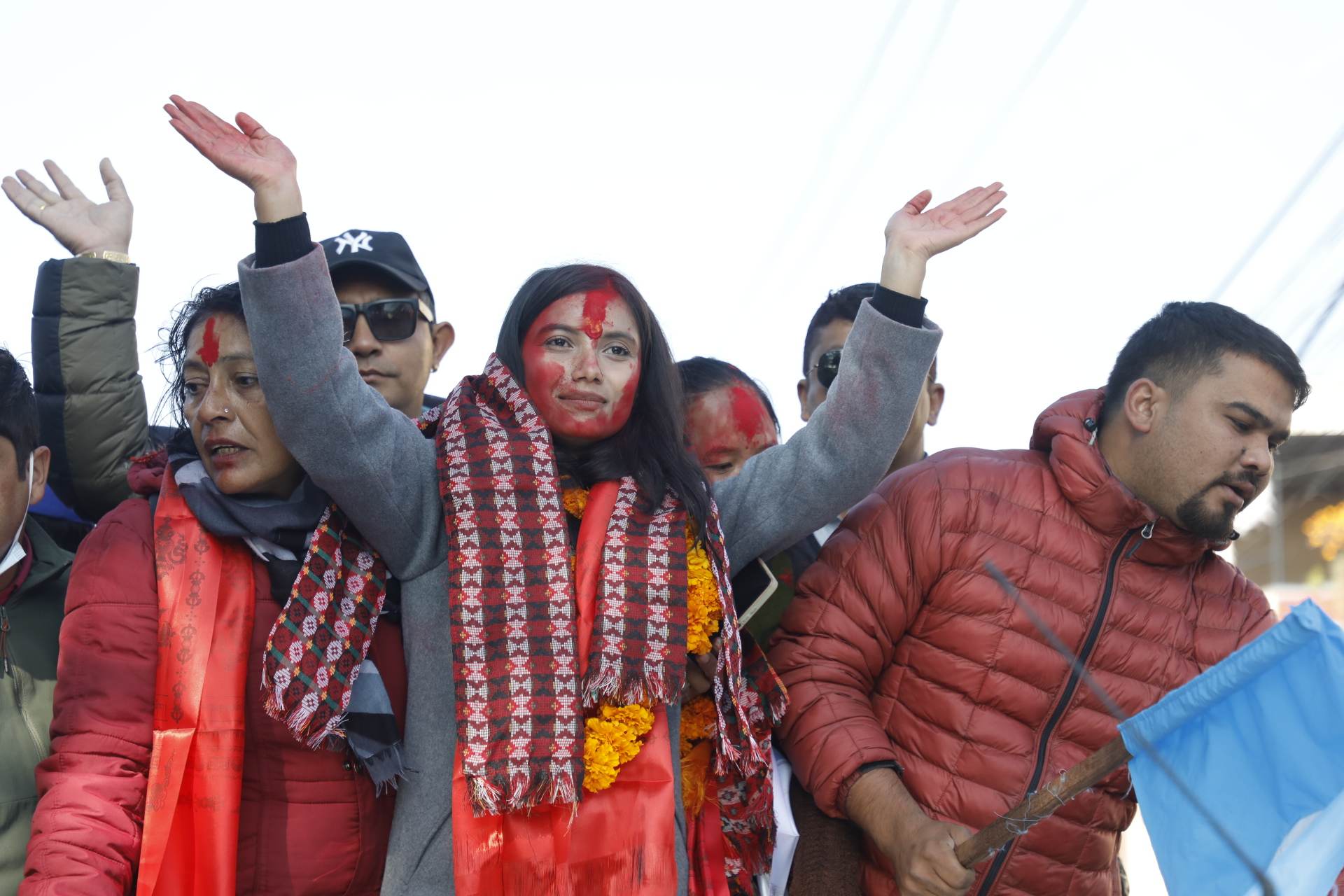As the vote counting for elections to Nepal’s House of Representatives and seven provincial assemblies is underway, three new political parties are making the mark by making electoral gains in constituencies where traditional parties-maintained stronghold for at least two decades.
The little-known Rashtriya Swatantra Party (RSP), Janamat Party and Nagarik Unmukti Party have broken into the national political scene as they have been dominating election results in several constituencies in the ongoing vote count.
Analysts said that the RSP can shape the power equation in the post-election scenario if it continues to make significant electoral gains in the final vote tally, breaking the hegemony of bigger parties.
“The RSP can become a kingmaker in the upcoming power equation if it makes significant electoral gains in the final vote tally. But it would be too early to say that because the vote counting is still underway,” Jhalak Subedi, a Kathmandu-based author and political analyst, told India Narrative.
Three new political forces— Rastriya Swatantra Party, Nagarik Unmukti Party and Janat Party—dominate the front pages of Kantipur daily. The rise of new parties has been attributed to the frustration towards & poor delivery by traditional political groups in Nepal #nepalvotes2022 pic.twitter.com/lPEVNgDHWm
— Deepak Adhikari (@DeepakAdk) November 23, 2022
Nepal went into federal parliament and provincial assembly elections on Nov 20. This was the second time the country held general elections after the promulgation of the constitution in 2015.
Out of a total of 275 members of the federal Parliament, 165 are to be elected through direct voting (first-past-the-post) and the remaining 110 are to be elected through proportional representation (PR) category. Similarly, out of a total of 550 members of the provincial legislatures, 330 are to be elected directly and 220 are to be elected through the PR system.
Rashtriya Swatantra Party in spotlight
The RSP formed by Ravi Lamichhane, a former TV anchor who came to the spotlight by highlighting public issues, has won at least three seats under the House of Representatives in key constituencies in Kathmandu, the federal capital.
RSP’s candidates who won elections are below 40 including Sobita Gautam, 27. She emerged victorious in Kathmandu-2 by defeating her close rival Onsari Gharti, a former speaker and wife of powerful Maoist leader Barshaman Pun.
Despite Gharti being a common candidate of the ruling electoral alliance, Gautam secured her victory in this crucial constituency, which remained a bastion of the communist parties for at least two decades. This is the same constituency where Madhav Kumar Nepal, a former prime minister, contested with the Maoists in 2008 elections.
Apart from Kathmandu, the RSP is taking lead in Lalitpur and Chitwan as the vote counting progressed. RSP Chairman Lamichhane is close to secure his victory in Chitwan-2.
Not only under the first-past-the-post (FPTP) category, the RSP is taking lead in the vote counting for the proportionate representation (PR) category of the lower house. According to Nepal’s Election Commission, the RSP is in the third position by bagging 1, 11,394 votes under the PR category.
On the political front, the RSP has taken a tough stand on the country’s existing federal system. The party deliberately skipped the provincial assembly elections this time showing reservations towards the country’s present federal structure. However, this may not go well in Nepal’s Madhes region where people are seeking for a greater political and administrative autonomy under the same federal structure.
Janamat Party’s rise in Madhes
As the vote counting for the elections continues, the newly-formed Janamat Party led by CK Raut is making electoral gains in Madhes, challenging the two dominant parties—Janata Samajbadi Party (JSP) and Loktantrik Samajbadi Party (LSP).
Raut, chairman of Janamati Party, has defeated Upendra Yadav, a powerful leader in Madhes region, who rose to power after the 2008 Madhes uprising that saw killings of dozens of Madhesi people at the hands of police during violent clashes.
Raut joined mainstream politics by quitting the secessionist movement in 2019 March following an agreement with the then KP Oli-led government. Since then, Raut tried to make significant inroads in the Terai-Madhes southern plains, which has a close socio-cultural connect with India.
#Saptari2: CK Raut's victory is certain.
CK Raut, Janamat: 31,963
Upendra Yadav, JSPN: 15,586
JP Thakur, LSP: 6,362
Difference between Raut and Yadav: 16,377
Votes to count: About 6,000#OkElectionUpdate #ResultWithOK #NepalElections2022 #NepalVotes2022 #Nepal pic.twitter.com/mlo5lZmpV3— Onlinekhabar English (@OnlineKhabar_En) November 23, 2022
The rise of Janamat Party is also not good news for traditional parties like the Nepali Congress which have preeminence in the region over the past at least three decades.
After the present elections, Janamat Party is likely to emerge as a new alternative political force in the Madhes region.
Tharu voters in far-west throwing weight behind NUP
Apart from Kathmandu and Madhes region, the political landscape of Nepal’s far-western region is also changing. A new political force is likely to gain electoral gains through present elections by cashing in on the sentiments of Tharu community, an indigenous minority group.
As the vote counting is underway, the Nagarik Unmukti Party (NUP) founded by Resham Chaudhary, is taking lead in at least three seats under the House of Representatives.
The Tharu community, which threw its weight behind the NUP for its stand against the traditional parties during the local elections held in May, is giving yet another opportunity in the present elections. In the last elections the Tharu-dominated Nagarik Unmukti Party secured dozens of seats in local units in Kailali and Kanchanpur.
Also Read: https://www.indianarrative.com/world-news/how-tharu-community-has-become-a-player-in-nepals-upcoming-elections-70432.html
Frustration towards old guard
Analysts said that the rise of newer parties reflects people’s growing resentment towards traditional parties who have been at the helm of central power for at least three decades.
“People voted for newer parties this time as they are tired of old parties and nasty businesses of their leaders in the guise of politics. The election results show people’s desire for a minimum change in the political leadership at least for now,” Subedi, the political analyst said.



















